Nuisance Algae and Harmful Algal Blooms of Buzzards Bay
Related Pages: Nuisance Codium off Wareham Sub page: Red Tide and PSP
There are a number of nuisance algae found in Buzzards Bay, and we often receive photographs or samples to help identify the species. Some of these species have become problematic because of increased eutrophication of coastal waters from excessive nitrogen from the land from fertilizer use and wastewater disposal. Some species were introduced from other areas. Some single-celled species (phytoplankton) may become so concentrated in the water they color it. These latter harmful algal blooms can be caused by a combination of factors relating to rainfall, temperature, and abundance of phytoplankton grazers. Some of the red tide and brown tide microscopic species have toxins harmful to people and other animals if consumed. Most of the algae described on this page are just considered nuisance species because they may release noxious odors when rotting, can contribute to fish kills as they decay and use up oxygen dissolved in the water, or are aesthetically displeasing on bathing beaches.
Filamentous algae
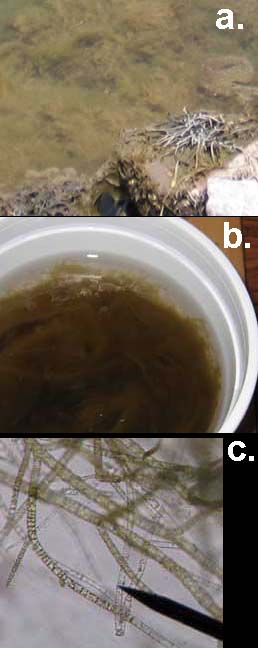
In our region there are several genera of similar looking filamentous uniserate (strand of single cells) marine algae. These include species of the green alga Cladophora and Ulothrix, and several species of brown algae, most notably Pilayella and Ectocarpus.
The specimen in the panel to the right was delivered to us in April 2008 from Westport. This fine slimy feeling brown filamentous algae was purportedly densely covering floats and pilings in Westport Harbor. Although the specimen lacked reproductive structures, which would have helped in its positive identification, based on color, cell form, size, and branching, we identified it as Pilayella littoralis. Early spring 2008 was wetter than normal which would have added more nitrogen to Wareham’s waters from land sources. This species is known to thrive under eutrophic conditions. Pilayella is also referred to as “mung” by some locals.
Drift Algae
Drift algae is a generic term for unattached algae that can accumulate and grow on the bottom of protected embayments. On hot sunny summer days, these drift algae can float to the surface, in scummy looking bands that may form wind rows, and wash ashore, sometimes in thick layers that are are nuisance to beachfront owners and swimmers. Cladophora is one of the more common species in our area, especially in eutrophic embayments where it has the appearance of balls of fine filaments or very fine steel wool. It is bright green when alive, but turns brownish when it dies, sometimes giving it the look of fecal matter. Often mixed in with Cladophora is another green algae called Ulva intestinalis (formerly called Enteromorpha intestinalis or sometimes “gut weed” because it has the appearance of small ribbon-like tubes or intestines). This species is common where there are discharges of wastewater, stormwater, or on gravel in front of septic system plumes leaching through a beach. Other common drift species in our area that wash ashore in eutrophic embayments overloaded with nitrogen include Chaetomorpha, a course dark green algae looking like a wiry kitchen scouring pad, Ulva lactuca, or sea lettuce, which has the appearance of large green sheets, and Gracilaria, a purplish red algae.
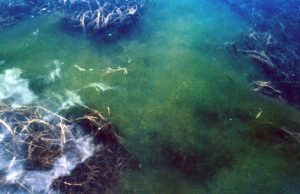
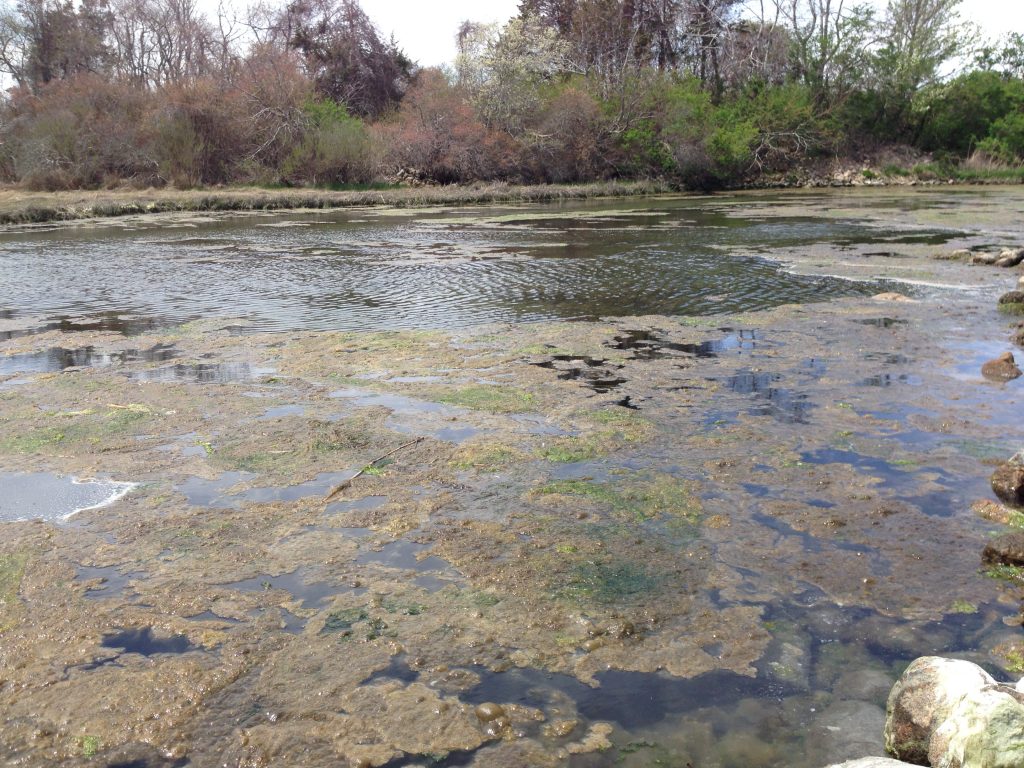
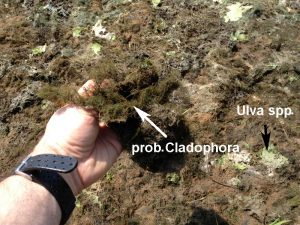
Epiphytic Algae and Periphyton
Epiphytic is a term for plants growing on other plants in a non-parasitic way, but in coastal waters, it term is commonly applied to algae growing on seagrasses like the Zostera marina (eelgrass). Periphyton is the general term for algae growing on any surface, but can also refer to the broader community of algae, cyanobacteria, protists, and small animals that may coat surfaces and sediments in fresh and marine waters. In embayments overloaded with nitrogen, eelgrass leaves and ropes hanging in the water from boats and docks are sometimes covered with a brown slimy felt consisting of mostly tiny filamentous diatoms, which is an example of periphyton.
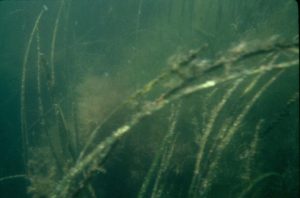
Codium
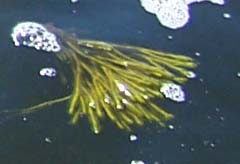
Codium fragile spp. tomentosoides is an invasive nuisance algae from the Asian Pacific. It was first reported on the East Coast on Long Island in 1957, and first observed in Buzzards Bay in 1961 (Carlton and Scanlon, 1985; Pederson et al. 2003). Throughout the 1960s to the present, Codium has continued to spread up and down the US coastline and into Canada, and is even a nuisance species in faraway places like the Baltic Sea and Australia (Global Invasive species database). Scientists believe it is primarily transported from site to site on the hulls of ships.
Codium is a robust alga with a sponge-like texture, often growing in two-foot across bush-like shapes. While this alga can crowd out and shade other plants and algae, one of the most serious problems with Codium is that it is a killer of shellfish. It does this by the simple act of growing on shells, and causing them to be smothered (in the case of oysters it is nicknamed the oyster thief), or causing the shellfish to be pulled up from the bottom and washed ashore. In Buzzards Bay, this is a common occurrence for whelks, slipper shells (Crepidula), and bay scallops. The accumulation of dead shellfish in Codium wrack is one of the main reasons why this beach wrack smells stronger, and attracts more flies, than the native eelgrass beach wrack.
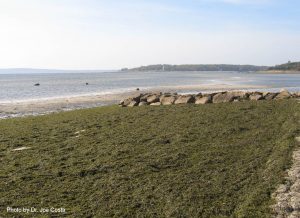
Read our article on a Codium population explosion off Wareham.
Submitting photographs
If you want to email a photograph of algae for identification, please include at least one photograph of the algae spread out as thinly as possible on the palm of your hand in good lighting, and in focus.